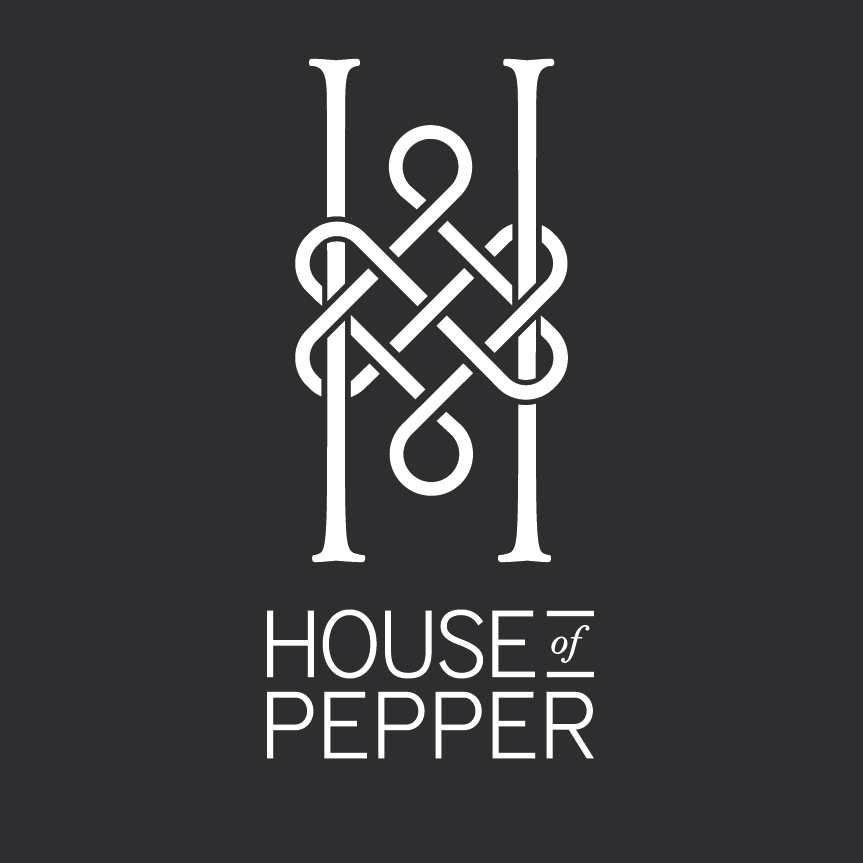In Medieval times the Christian church adopted the pagan people into their practice to teach them about the life of Christ. The Irish traditional arts found a new outlet in the creative work of the illuminated manuscripts and applied it to the Celtic Christian designs.
St Columba and Iona
Colum Cille (Columba) crossed the sea to Scotland with his followers and settled on the island of Iona off the Isle of Mull in 563 AD. Columba was an Irish Celt and a Dalriadan or Scotti and he brought the Gaelic language and Christianity to the Picts of Scotland. Later the Scotti became established in the highlands and became known as the Scots. As Gaelic displaced the Pictish language, the descendants became known as the Scots and subsequently we have Scotland.
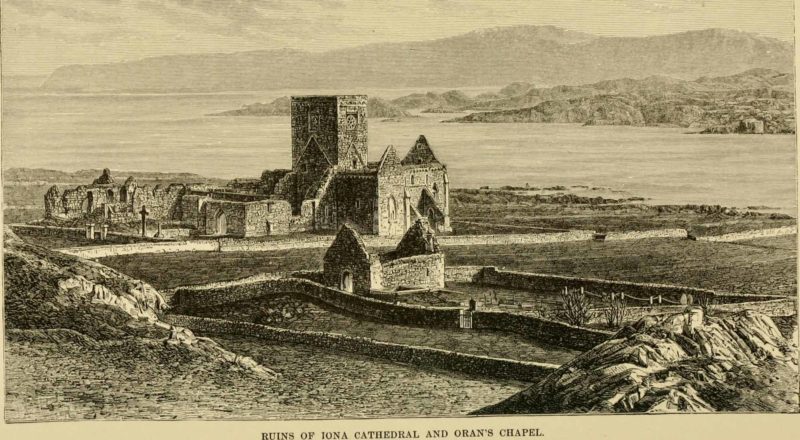
A woodcut of the Iona Monastery Ruins
St Columba the most famous Celtic missionary monk and his followers set up outreach huts in small groups amongst the pagan people on the island and practised and preached a Christian way of life. Iona is a beautiful island with gentle hills and generous open spaces surrounded by ocean, rock and strong winds. Columba would sit on the rocks on the hill overlooking the abbey to write. As priest and abbot of the monastery he established a monastic school. The clergy were married and part of the community with community duties. There were no parishes and the church lacked a solid administrative structure.
St Columba and the monks preached and adapted the Christian religion to blend in with the local culture. Subsequently it was a mix of pagan and Christian worship. The Christian church calendar adapted to fit in with the pagan Celtic festivals and practices.
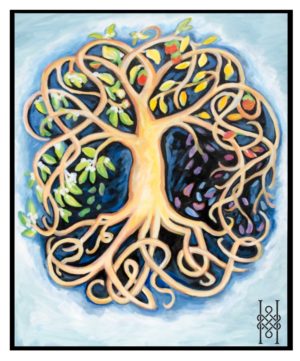
Tree of Life with Four Seasons
The Celts believed in the natural world and the cycle of the seasons. There were eight Sabbats (festivals) each year. The winter and summer solstice, autumn and spring equinoxes and the farming calendar of planting, growing, harvest and resting.
Before the Christian mission, the Celts worshipped animals, nature and their own Gods and Goddesses. Christ was seen like a Celtic God, as a hero. The Christian resurrection was not new, the Celts already believed that souls were born again in the Otherworld. A place where they saw loved ones again, a perfect place. There was no hell or place of punishment.
Columba died in 597 on Iona after 34 mission years. His influence and impact extended far beyond the Picts and Iona. Monastic monks were later sent across the Lowlands and into Northumbria as missionaries to Christianise the Anglo-Saxon tribes. By the 7th century all of Scotland was converted to Christianity by the Irish missions.
Shared Symbols in the Artwork
The Triple Spiral and Triple Knot
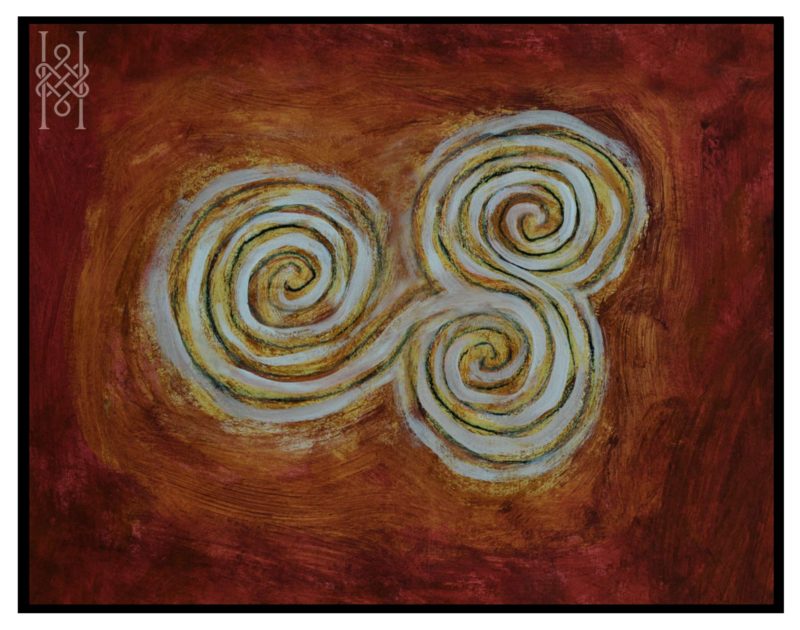
The triple spiral on the Newgrange entrance stone
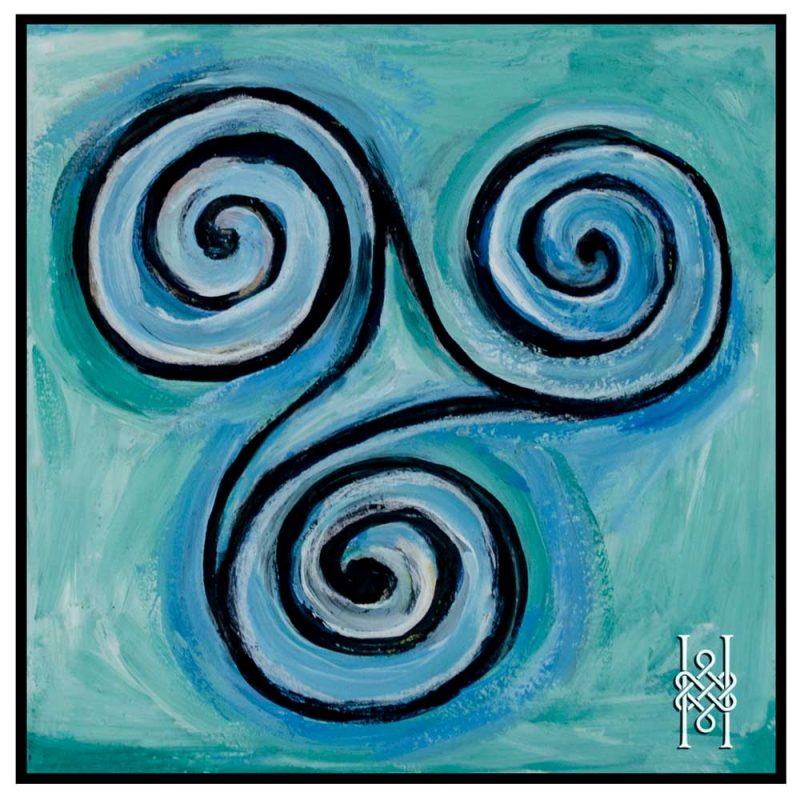
Triple spiral
The Celts were already familiar with the “three in one’’ concept of the Holy Trinity and the visual symbols already existed as the triple knot and triskele or triple spiral.
There were three parts to the life journey in ancient Celtic belief. The soul which learns and experiences the world, the spirit (heart, mind, instinct) which observes and guides the soul and the body which is the ship of the soul.
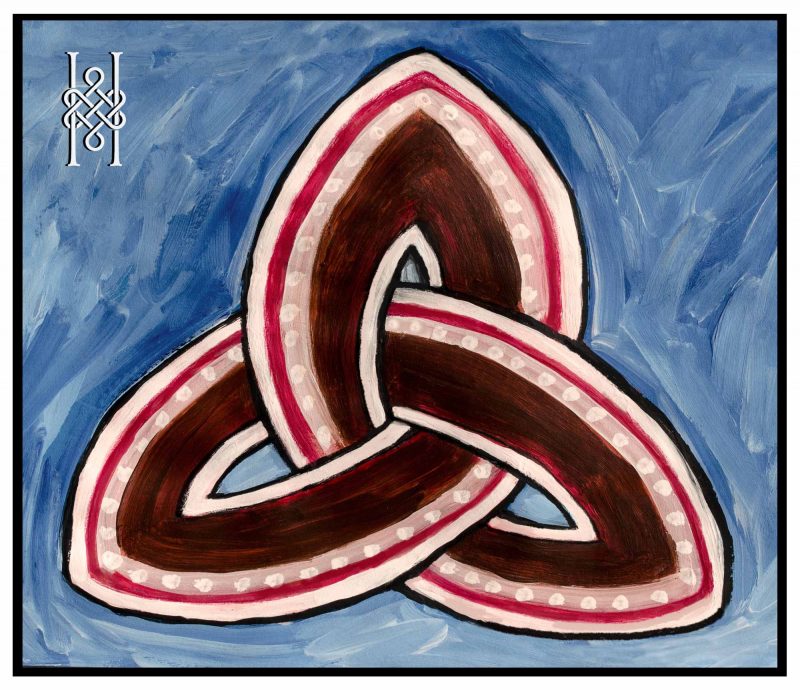
Celtic triple knot
Each part is equal. There is no highest state; it is not hierarchical as with some religions. The soul which is the ‘true self’ gradually grows in wisdom. In the Scriptures it states that all bodies belong to the Earth and will return to Earth. The triple knot is eternal and is represented by a continuous line that has no beginning and no end and moves through the three parts.
The Celtic Cross
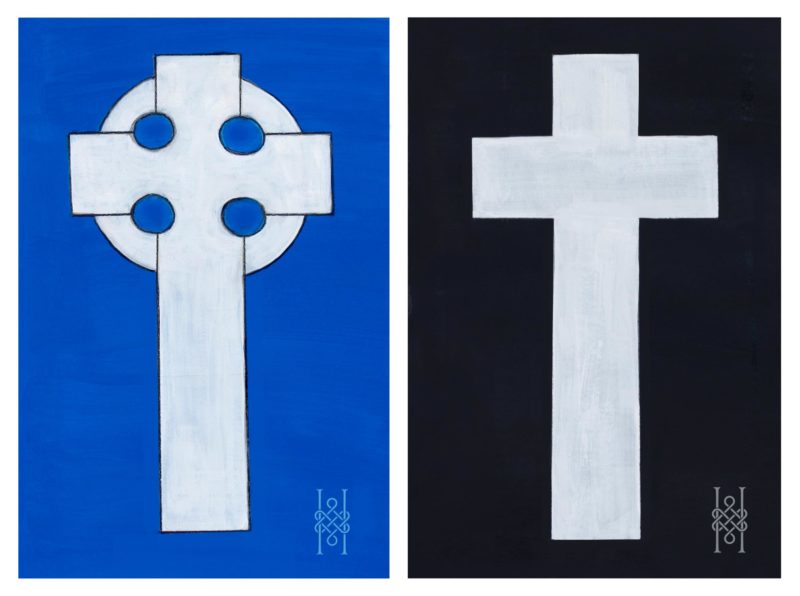
Celtic Cross and Christian Cross
The cross was already part of the Celtic calendar and lifestyle in the late sixth century. Beliefs centered round the four seasons and the four elements. Spring as Air, Summer as Fire, Autumn as Water, and Winter as Earth. Each cycle feeds into the next so there is balance, and no one season, or element can dominate. Water follows fire because it can call it back to order. Think of the bushfires of Summer and the rain of Autumn. The power of the four combined elements of nature is greater than the power of God.
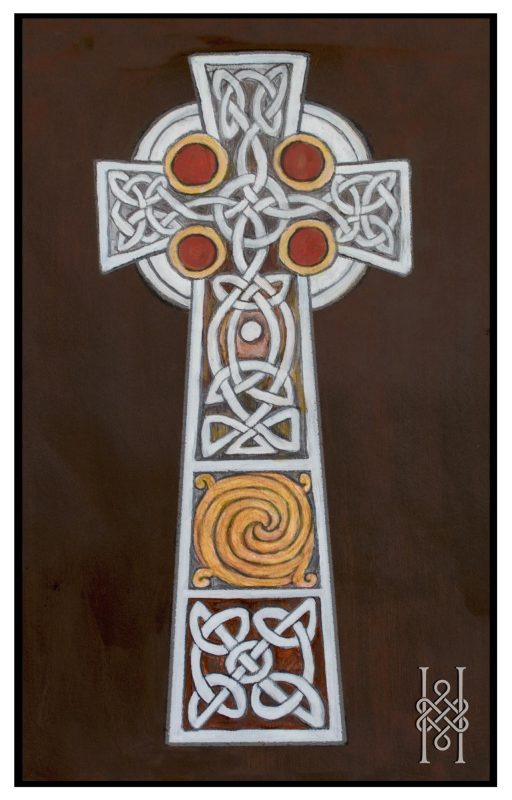
Ornamental style Celtic Cross common today
The Celtic spiritual belief saw humans as caretakers of nature, not rulers over it.
The four seasons and four elements of nature were represented on the Celtic Cross. It is possible that the simple Christian Cross came from the abstract design of the Celtic Cross. The Celtic Cross is shown with a circle behind the crossbar and usually with an ornamental interlace and knotwork design. High crosses have the circle feature in the Celtic design and are mostly carved in stone like the Iona Abbey high crosses.
In the Middle Ages the Christian Irish missionaries adopted the pagan people into their practice in order to convert them. The Irish decorative style from metalwork and ornament were introduced into the design layout and calligraphy of the illuminated manuscripts. Celtic flowing lines, symbols, motifs, animals, birds, figures and signs are found everywhere in the elaborate design and composition of the Book of Kells, even on the lettering and initials in the script.
Book of Kells Artistry

Photo:View of Iona Isle showing the Abbey from the ferry by Jan Smith, Brisbane, Australia
It is believed that the Irish monks began work on the Book of Kells on the island of Iona in 750 AD. It is revered as the great gospel book of Colum Cille (Columba) and valued for the fine calligraphy and Insular illumination. It is believed that later it was taken to Ireland to Kells and county Meath for safekeeping. Today it is in Trinity College in Dublin.
The Book of Kells was a written copy of the text based on the Vulgate from the St Jerome Latin translation of the Bible in the 4th century. It contains the four Gospels, Matthew, Mark, Luke, and John. The Latin manuscript was decorated and illuminated with pigment paint and metallic gold and silver paint over the drawings on the vellum parchment. The book became the most celebrated of all the illuminated manuscripts and like all great works of art it transfers a sense of the divine in the wonder of it’s splendor and craftsmanship.
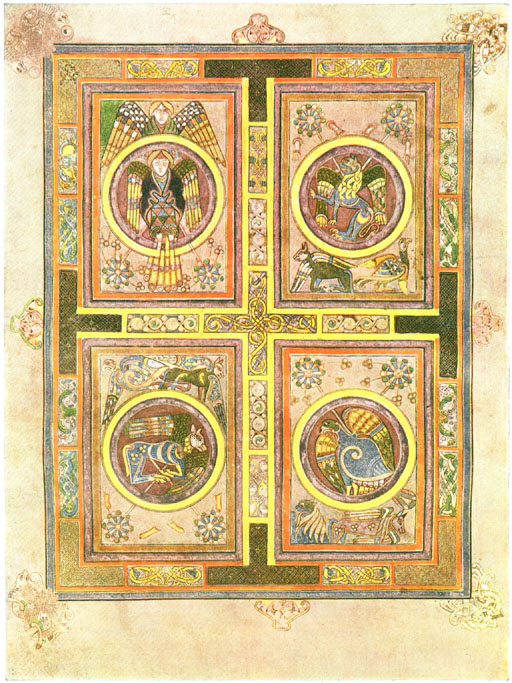
Four Evangelists- Book of Kells
This Insular manuscript style of Christian art was incredible and not seen anywhere else in monastic Europe. The four Gospels were written in Latin in majuscule insular script onto a 13 inch by 8 inches format and there were 680 pages.
Early Irish artwork features knotwork interlace, early Celtic spirals, triskeles, twisting and curvilinear lines that weave and interlock in geometric patterns. Ornate, abstract, and alive with curves and flourishes and animals. All these features appear in the Book of Kells.
There are errors in the script and unfinished areas, some with corrections and markers. There seems to have been three main talented artists working on the manuscript. Full of signs and symbols this great Book has significant meaning to the monks and religious viewers. Symbols help the soul memory and help learning. Pilgrims visit the Iona Isle and the place of inspiration and many visit Dublin to see the magical quality of the Kell’s manuscript.
The amazing Book of Kells brings more than the artwork to our attention. It brings the spirit of collaboration and the crossing of boundaries in religious art. The artist monks from copying the Bible in Latin bring a new art style to the Church. The pagan beliefs enriched the new vision, and the great Book of Kells stands as a brilliant example of collaboration between people and ideas.
These essays are copyrighted as is my original artwork. Pages can be printed and used for education purposes.
